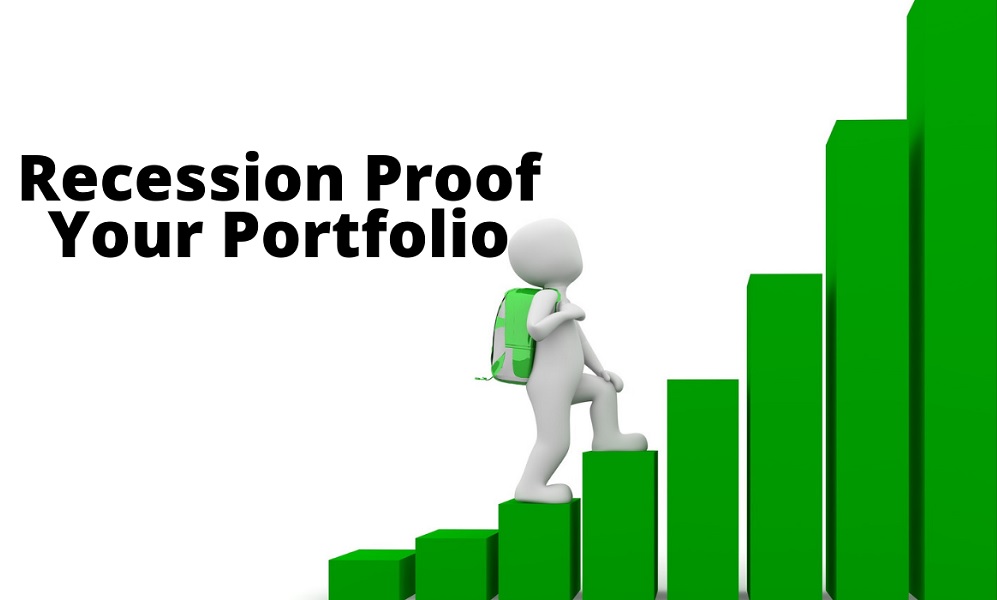Do you think a storm is headed towards the American economy? The U.S. hasn’t seen a recession since 2009, but the word ‘recession’ has been making the news almost daily. With steady economic growth over the past decade, some worry that the U.S. economy’s winning streak could be coming to an end. Between a slowing global economy, several ongoing trade disputes, and the upcoming presidential elections, recession-themed chatter has become the new norm.
The potential for a 2020 economic downturn and recession seems to bring predictions from both sides of the political divide. Regardless of who will end up saying, “I told you so,” it’s important to look at how we can minimize the collateral damage that this year’s recession debate will cause.
Simply hearing the word “recession” holds enough weight to make most investors and consumers nervous. Business, consumer, and investor confidence are all shaken whenever the topic is brought up by an influential person or publication. This can lead towards less consumer spending and investing. This potential outcome is even more substantiated by the recent report from Google that shows the search volume for the word “recession” has peaked to highs not seen since the last U.S. recession in 2009.
So what should we do until this storm passes over, or makes actual landfall? We believe the timing is optimal for investors to audit the resilience of their portfolios. To help you with this, we suggest you consider three strategies to both protect and recession-proof your portfolio.
A 3-Step Protection Strategy for Recession-Proofing Your Portfolio
Warren Buffet is known as one of—if not the world’s most successful investor. His rule for investing is never to lose money. Great advice, but let’s look at how realistic this is.
Preserving capital is the key to success in long-term investing. So, what happens when your investment is losing its value or when a recession hits? Warren Buffet isn’t saying that you should be reactive and quickly sell your investment holdings because they lost money or because of the potential of a looming recession. Instead, he suggests a more proactive approach. Carefully monitoring your portfolio and weighing potential losses against what you can financially endure, is vital in your efforts to increase your wealth. While it’s impossible to avoid risk altogether, you can be smart and follow these three strategies to better recession-proof your investment portfolio.
Maintain a diversified portfolio.
Diversification is one of the foundations of the Modern Portfolio Theory—also referred to as MPT. In the event of a recession, having a diversified portfolio can help you perform better during a market downturn than you could if you had a concentrated portfolio. The key to this is being proactive and diversifying before a recession hits.
Your portfolio should be broad and diversified. It should reflect a range of investments in multiple asset classes, which in turn reduces your unsystematic risks. You will still have systematic risks since you’re generally investing in markets versus companies, but maintaining a broader and more diversified investment strategy is a smart recession-proofing move.
Add non-correlating assets to your portfolio.
It’s nearly impossible to avoid all risks when investing. While you will always have systematic risk, you can wash your hands of most, if not all, your unsystematic risks. How do you do this? Add non-correlating asset classes to your portfolio. This allows your portfolio to maintain lower volatility, which will eliminate unsystematic risk and even reduce your systematic risk.
Non-correlating asset classes include commodities, bonds, currencies, and real estate. When you add these to your portfolio, they react differently to market changes than stocks do. When one non-correlating asset is down, another or multiple others could still be up. Most theorize that this helps to eliminate the highs and lows in your portfolio’s performance, resulting in more balanced returns.
With that said, it’s essential to keep in mind that in recent years, evidence has revealed that some non-correlated assets can still mimic each other. This would reduce this specific strategy’s effectiveness. This is why it’s critically important to continue keeping a watchful eye on every aspect of your portfolio and not just leave lower-risk investments unmonitored.
Protect your portfolio by investing in dividend-paying stocks.
Dividend-paying stocks are one of the most underutilized investment strategies when it comes to well-rounded portfolios. In many cases, dividends from these investment stocks can account for a decent slice of its total return—if not all of it.
Investing in and owning a portion of a dependable company is a wise recession-proofing move. Not only does ownership in these stable companies often result in above-average returns, but it can also provide a cushion to risk-averse investors. This, in turn, results in lower volatility and can provide stable investment income even at times when the market declines—such as during an economic recession.
Dividends provide you with a cushion when stock prices fall and a reliable hedge against inflation. Plus, if you get the opportunity to invest in a blue-chip company, you can gain further portfolio protection if they pay out both dividends and possess pricing power. This is something that fixed-income investments cannot provide unless you invest in something like TIPS—Treasury inflation-protected securities.
You can take these wins even further when investing in companies that have more than 25 consecutive years of increasing dividends. This means they increased dividends throughout the entire last recession! Sometimes referred to as “dividend aristocrats,” these investments offer an increased payout annually while keeping bond payouts the same. This is as close to a guaranteed payout as you’ll get in the investment market. This, along with investing in blue-chip companies, allows you to maintain your purchasing power, despite periods of high inflation. This makes it a solid investment for those nearing retirement.
If you’re not sold on this strategy yet, it’s important to note that based on studies, companies that pay out generous dividends often grow earnings faster than those that don’t. When the company you own a part of does well income-wise, share prices rise, resulting in higher capital gains. Sounds like a pretty good strategy, right?
Now’s the perfect time to start preparing your portfolio for the long haul.
Take advantage of these three strategies and be proactive in protecting your valuable investments now. With or without a recession, volatility is inevitable when investing in stocks and bonds. Learning from the mistakes made prior to the 2009 recession, be proactive in protecting your portfolio and financial future against a future recession. Not entirely sure what you’re trying to communicate here. This is worth a second look.
Many readers will expect you to specify which study/studies you’re talking about. I think a hyperlink or reference to one of them would suffice, depending on your medium.



